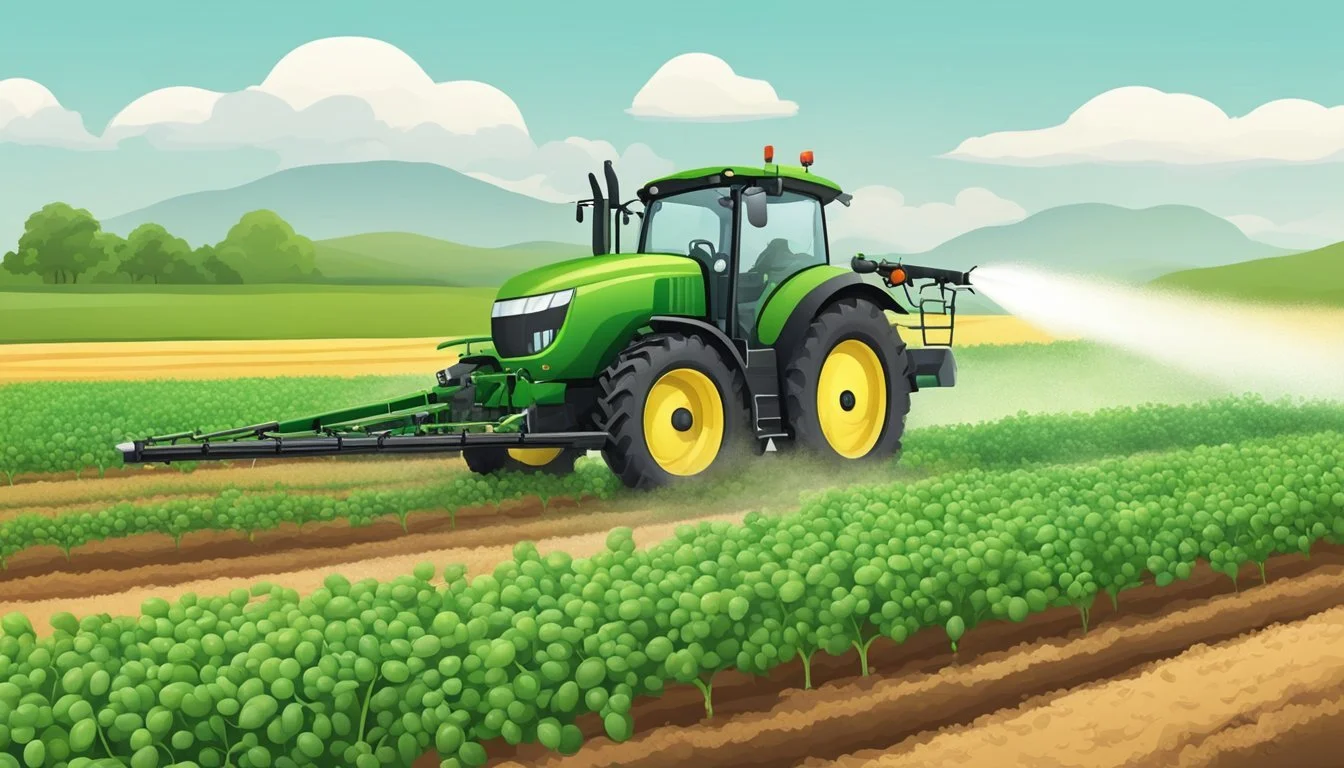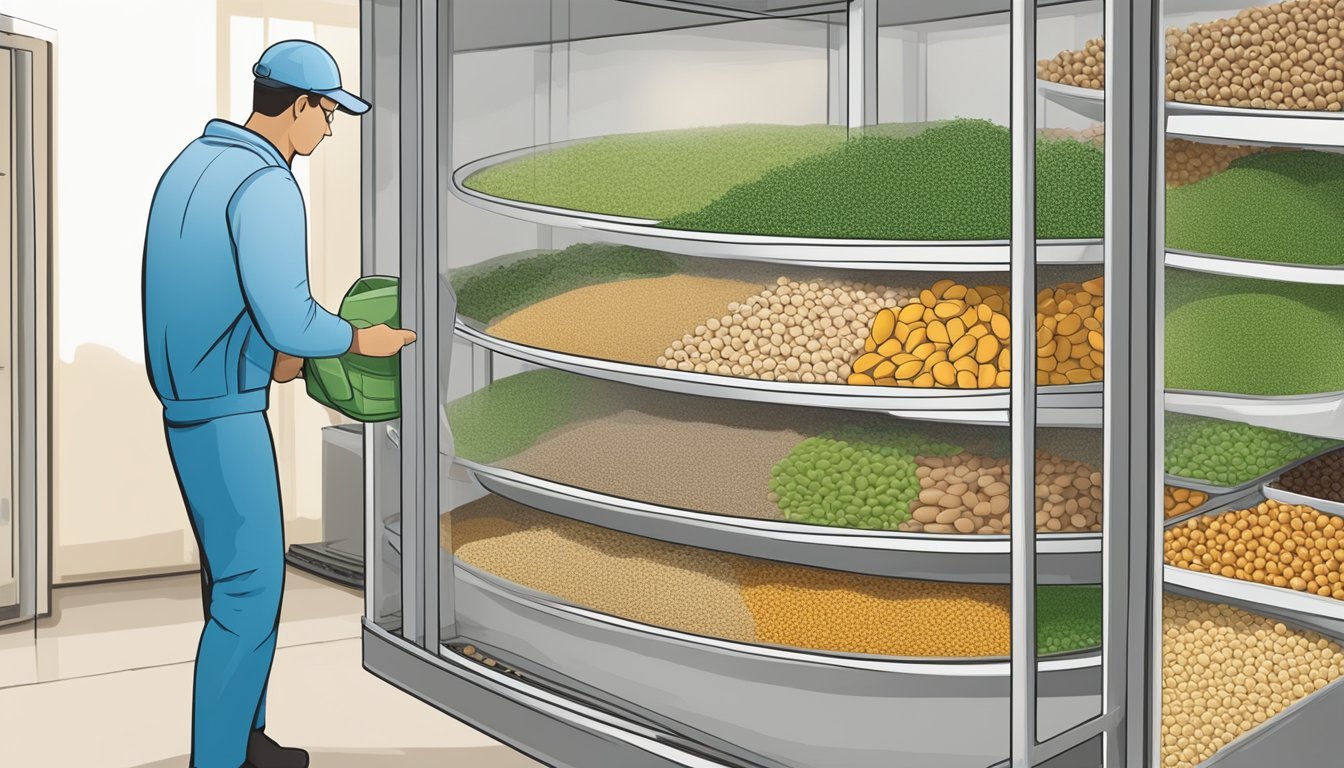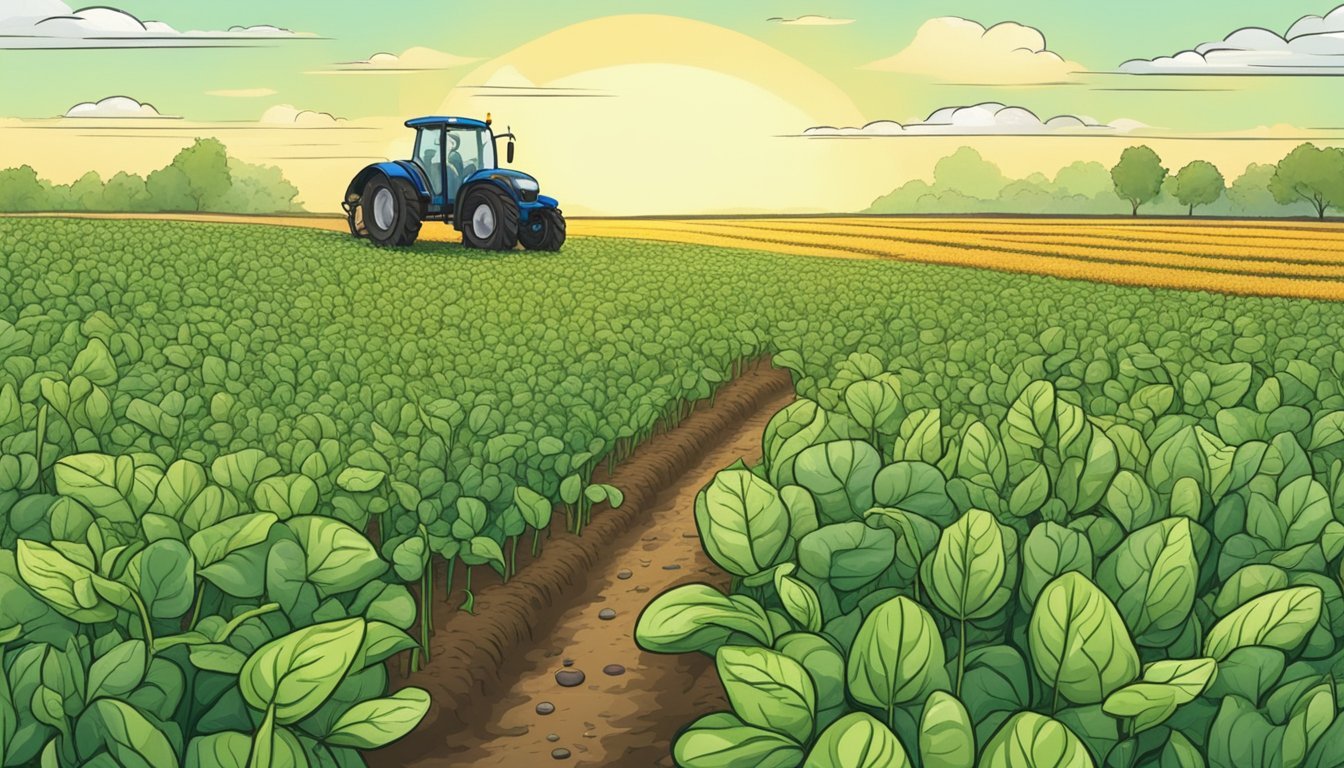Pest Control for Legumes
Effective Strategies for Beans and Peas Protection
Legumes, such as beans and peas, are vital crops for global food security and play a crucial role in agricultural production. As a source of dietary protein, they are especially important in vegetarian diets where alternatives to animal protein are needed. However, like all plants, legumes are susceptible to a variety of pests that can significantly impact both the yield and quality of the produce.
Effective pest control strategies are essential to maintain the health of these crops and ensure a stable food supply. Addressing pest issues in legumes involves understanding the lifecycle and behavior of the pests, as well as implementing measures that are environmentally sustainable and safe for consumption. This includes the judicious use of pesticides and the adoption of integrated pest management practices that minimize potential harm to the ecosystem.
Farmers and gardeners must stay informed about the most common legume pests and the latest methods for their control. Each pest presents unique challenges; for example, aphids can damage the terminals of the plants, while whiteflies pose a threat by transmitting viruses. Knowledge of such pests and the adoption of proven management tactics are essential for protecting legume crops, and, by extension, the food supply they support.
Overview of Legume Pests
Legume crops are susceptible to various insect pests that can lead to notable yield losses and affect overall productivity. Effective pest control is crucial to minimize damage and ensure a successful harvest.
Common Insect Pests
Legumes, including beans and peas, attract a range of insect pests that can harm the crops at different stages of growth. Below are some key pests identified:
Aphids: These small, sap-sucking insects damage legume terminals and can reduce plant vigor.
Whiteflies: They feed on plant sap and are known to transmit the bean golden mosaic virus.
Caterpillars: This group includes the bean leafroller which feeds on the leaves of legumes.
Beetles: Some species are foliage feeders causing direct damage to the plants.
Thrips: They are particularly troublesome during the flowering stage as they feed in blossoms.
Pod Borers: These insects represent a major threat to grain legumes due to their direct feeding on pods.
Stink Bugs: These pests feed on legume seeds and can transmit plant diseases.
Impact on Production
The impact of insect pests on legume production is significant:
Yield Reduction: Insects such as pod borers are culprits for substantial yield losses in regions of Asia and Africa. Infestations can lead to a compromised harvest and economic loss.
Productivity: Insect damage to legumes can directly affect the productivity of the crop by reducing both quality and quantity of the harvest.
The management of these insect pests is a crucial step in the cultivation of legumes to protect yields and maintain productivity levels.
Legume Pest Identification
Effective management of pests in legumes, such as beans and peas, requires understanding the specific insects that target these crops and recognizing the distinctive signs of damage they impart.
Insects Affecting Different Legume Species
Numerous insect species impact legume health, each favoring different parts of the plant. For instance, aphids are common pests for many legume species, including field pea and faba bean, often targeting the terminals of the plants. Cowpea is frequently affected by various beetle species, which prefer to feed on the foliage and can severely damage the plant if left unchecked. The pigeon pea, a staple in tropical agriculture, encounters unique pest challenges such as the legume pod borer that attacks the pods of the plant. Each legume species, including widely cultivated ones like Phaseolus vulgaris, or common bean, has a specific pest profile that requires targeted identification strategies.
Recognizing Pest Damage
Identifying pest damage involves looking for signs that are characteristic of particular insects. Aphids, for example, can cause the leaves to curl and produce a sticky substance known as honeydew. In contrast, beetle damage is often indicated by holes or chewed margins in the foliage. Pod-damaging insects, such as the ones affecting pigeon pea and cowpeas, leave telltale marks on the pods, which may include holes, discoloration, or the presence of larvae within. Early and accurate identification of these signs is crucial for implementing timely and effective pest management strategies.
Integrated Pest Management (IPM) for Legumes
Integrated Pest Management (IPM) is a sustainable approach to managing pests by combining biological, chemical, and cultural tactics that are safe, effective, and environmentally considerate.
Biological Control Techniques
Biological control involves the use of natural predators, parasites, and pathogens to keep pest populations in check. For legumes, strategies may include introducing beneficial insects like lady beetles and lacewings that prey on aphids. In some cases, pheromones are utilized to disrupt the mating patterns of pests, reducing their population over time.
Chemical Control Strategies
Chemical control is another critical IPM component. It should be employed judiciously to minimize adverse environmental impacts. Synthetic insecticides may be effective, but they must be selected and timed to avoid harm to beneficial species, and applied only when necessary. The use of host plant resistance is a pivotal strategy, where legume varieties are cultivated to be naturally less susceptible to pests.
Cultural Practices for Pest Management
Cultural practices are preventative measures that reduce pest establishment, reproduction, dispersal, and survival. For legume crops, this may include:
Cropping systems: Adopting rotational cropping to disrupt pest life cycles.
Intercropping: Planting legumes with other crops to create diversity that can confuse or repel pests.
Sanitation: Removing plant residues post-harvest to eliminate breeding grounds for pests.
Each of these strategies can contribute significantly to the overall effectiveness of Integrated Pest Management programs for legumes, leading to healthier crops and reduced reliance on chemical interventions.
Sustainable Pest Control in Legume Production
Effective management of pests in legumes, such as beans and peas, necessitates a systems approach that integrates sustainable methods with recent advances in research. Adhering to eco-friendly strategies helps not only in combating pests but also in preserving the environment and biodiversity.
Organic and Eco-Friendly Approaches
Organic matter plays a crucial role in sustainable pest control because it supports a diverse soil ecology that can suppress pest populations. Farmers are increasingly implementing farming practices that enhance soil health, such as the application of organic compost, which can lead to an increase in biological control agents. These agents, including beneficial insects, nematodes, and microbial pesticides, are paramount in maintaining insect resistance within crops. The emphasis is on creating a balanced ecosystem where pest populations are kept in check without the use of synthetic pesticides.
Climate change and global warming have a direct impact on pest dynamics in legume production, often leading to more aggressive infestations. Sustainable practices support resilience against such environmental changes. For example, the use of cover crops can improve soil organic matter and moisture retention, thus providing plants with a buffer against the stressors brought about by a shifting climate.
Advances in Pest Control Research
Significant progress has been made in identifying and developing new methods for pest control in legume farming that align with environmental and health standards. Research has led to the discovery of specific baculoviruses that are particularly effective against pests such as the pod borer, without harming other beneficial species. Studies like these are documented in scientific journals, further demonstrating how targeted interventions can reduce reliance on chemical pesticides.
Innovations in genetic research have also contributed to the development of legume varieties with improved insect resistance. Such advances not only reduce the need for external pest control measures but also contribute to the overall sustainability of legume farming by minimizing intervention costs and environmental impact.
This shift towards research-informed, eco-friendly strategies for pest control is a testament to the farming community's commitment to sustainable agriculture and food security.
Role of Climate and Soil in Pest Incidence
Pest prevalence and the severity of infestations in legume crops are significantly influenced by climate factors, especially temperature, and soil conditions such as fertility levels and the presence of atmospheric nitrogen.
Temperature Influence on Pest Populations
Temperature directly affects the life cycles and behaviors of pests. Higher temperatures, attributed to climate change, can expedite the developmental rate of insects, leading to increased numbers and generations of pests like pod borers within a single growing season. For instance, the pod borers Helicoverpa armigera pose a greater threat as temperatures rise, as found in research discussing pest management regarding climate change. Conversely, extreme cold can suppress pest populations, however, shifts in climate patterns are reducing these colder periods, allowing for longer seasonal activity of pests.
Soil Fertility and Pest Dynamics
Soil fertility plays a pivotal role in legume health, but it can also inadvertently affect pest dynamics. Soils with high fertility may support vigorous plant growth, yet this can also attract more pests such as aphids that feed on the sap of nutrient-rich plants. On the other hand, soils with balanced atmospheric nitrogen levels can improve plant health, potentially increasing resistance to certain pests. However, an imbalance could lead to either an increased insect growth rate, as some insects thrive on nitrogen-rich foliage, or weakened plant defense mechanisms, making them more susceptible to pest attacks.
Pest Management in Legume Storage
Effective pest management in legume storage is crucial for maintaining grain yield and quality. Insects can cause substantial damage to stored seeds, necessitating strategic measures to protect pulses and other grain legumes.
Post-Harvest Pest Challenges
After harvest, legumes face various insect pests that threaten total grain production. Common pests include bruchids or bean weevils, which are notorious for their ability to penetrate seed coats and consume the insides of beans and peas. Other insects, such as the cowpea weevil and various species of moths, can also infest storage environments, leading to significant losses. The resultant damage not only reduces the quantity of the grain but also degrades the nutritional quality and market value of the pulses.
Strategies for Protecting Stored Legumes
To safeguard legumes during storage, multiple strategies can be employed. These include:
Physical barriers: Storing legumes in airtight containers can prevent insect infestation.
Temperature control: Lowering the storage temperature can inhibit insect development.
Desiccants: Using moisture-absorbing materials ensures a dry environment that is less conducive to pest survival.
Botanical and chemical protectants: Applying natural or synthetic insecticides can deter or kill pests, although one should consider integrated pest management approaches to minimize chemical use.
Sanitation: Keeping the storage area clean helps to avoid attracting pests.
Each method aims to protect the precious grain yield of legumes and ensure that the total grain production remains uncompromised. It's a delicate balance to maintain storage conditions that are hostile to pests but preserve the quality and viability of the seeds.
Legumes in Global Agriculture
Legumes play a pivotal role in global agriculture, providing critical contributions to food systems and security. They comprise a range of crops, including pulses like chickpeas, lentils, and common beans, each essential for a balanced ecosystem.
Legume Production in Key Regions
India stands at the forefront of pulse production, being the largest producer and consumer of pulses in the world. With crops like Cicer arietinum (chickpea), Vicia faba (fava beans), and Pisum sativum (peas), the country sustains a notable portion of its population's nutritional needs. Chickpea, for instance, ranks among the top in terms of cultivated legumes.
Major Legume Producing Country Chickpea India Lentil Canada Common Bean India
In contrast, regions like Africa cultivate legumes like cowpeas and pigeon peas, which are particularly resilient to harsh climates. Pulse production across these key regions exemplifies their adaptability and significance in varied agro-ecological zones.
Contributions to Food Systems and Security
Legumes, especially pulses, play a significant role in enhancing food systems. As a source of plant-based proteins, minerals, and vitamins, they bolster food security. Lentils and chickpeas, being nutrient-dense, support dietary needs in regions where meat consumption is limited due to either economic or ecological reasons.
Pulses provide a sustainable alternative to traditionally more resource-intensive protein sources.
Crop rotation with legumes can enhance soil health, reducing the need for synthetic fertilizers.
By implementing efficient pest management in legumes, agricultural outputs can be maximized, which directly impacts food systems and security positively.
Challenges and Opportunities in Pest Control
Effective pest control in legumes faces both formidable challenges and promising opportunities. The balance hangs on understanding complex ecosystem dynamics and leveraging advancements in technology and practice.
Adapting to Environmental Changes
Legumes suffer from a variety of arthropod pests that thrive under certain environmental conditions. With environmental changes, such as drought, the behavior and prevalence of these pests can shift, often becoming more difficult to predict and manage. These stressors can also exacerbate issues with plant viruses, which are typically vectored by insects. Adapting to these changes demands a robust understanding of ecological patterns and how shifts in climate might influence pest populations.
Innovations in Pest Management
However, challenges beget opportunities, and innovations in pest management are on the rise. Insect growth regulators (IGRs) are being developed to specifically target the growth and reproduction of pest insects without causing undue harm to other organisms. This precision helps maintain the integrity of the surrounding ecosystem while combating pest issues. Additionally, integrated pest management practices, combining traditional methods with cutting-edge technology, can improve control strategies and lessen environmental impact.
Frequently Asked Questions
In the context of legume cultivation, addressing pests effectively is crucial for the health and yield of the crops. This section answers common questions on pest management strategies for beans and peas.
What are the most effective methods for managing bean diseases?
Effective methods for managing bean diseases include crop rotation, use of resistant varieties, and appropriate application of fungicides. Consistent monitoring and early disease detection are also essential for successful management.
How can bean flies be controlled in legume crops?
Bean flies can be controlled by using cultural practices such as timely planting, crop rotation, and using neem-based insecticides. Biological control using parasitic wasps is another eco-friendly control strategy for bean flies in legume crops.
What is the preferred insecticide for protecting cowpeas against pests?
The preferred insecticide for protecting cowpeas should be one that's effective on the target pest yet safe for the environment and non-target organisms. Pyrethroids are commonly recommended for their effectiveness against a broad range of cowpea pests.
Can you list the major insect pests that affect beans and their control measures?
Major insect pests that affect beans include aphids, caterpillars, beetles, and thrips. Control measures include timely planting, using insect netting, applying insecticides, and introducing beneficial insects such as ladybugs that prey on aphids.
What chemicals are recommended for spraying beans to prevent pest infestations?
Chemicals recommended for spraying beans may include insecticides such as malathion, permethrin, or neem oil. However, it is vital to follow integrated pest management practices and use chemicals only as a last resort, adhering to the recommended safety guidelines.
How can I protect my pea plants from common bugs and insects?
Protecting pea plants from bugs and insects can be achieved through preventive measures like using floating row covers, maintaining proper sanitation, encouraging natural predators, and applying organic pesticides if necessary.






